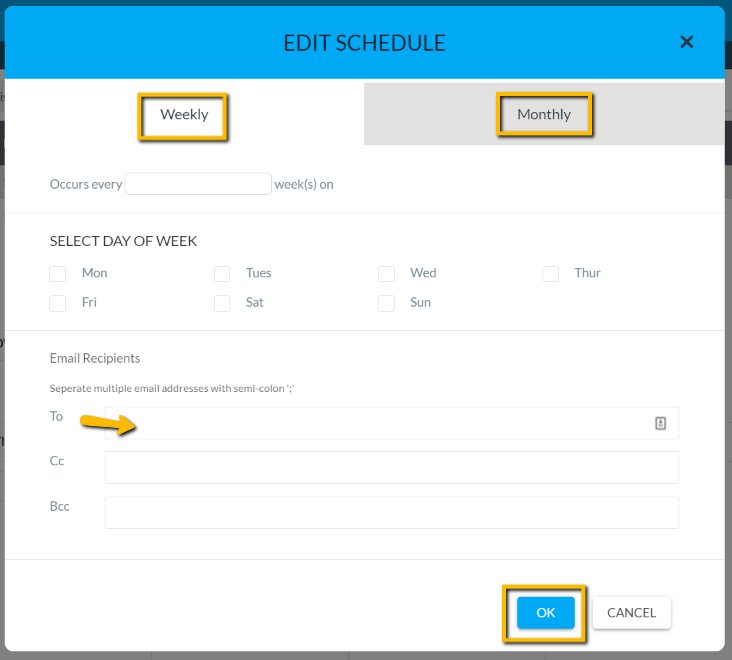Reports - Maintenance History
This article shows a User how to run Maintenance History Reports. Maintenance History reports allow the User to report on completed work orders. The results of this report provide valuable data such as maintenance costs, labour hours, and whether work orders have been completed on time or late. The User can run this report from either the Enterprise Level or the Facility Level. When a maintenance history report is run at the enterprise level, it will generate a comparative report from one facility to another. Typically, a User would only run a maintenance history report at the enterprise level to get a snapshot of how much in maintenance costs each facility has incurred, compared to one another. To get the more detailed information regarding a facility’s completed work orders, it should run from the facility level.
Definitions
Show Graphs: Show Graphs will display the Summary graph and the Status graph.
Show Summary/Details: Show Summary/Details that enables a User to select only a summary of just the details.
Work Order Type: Work Order Type allows a User to choose to display Equipment, Location or Vehicle-based work orders.
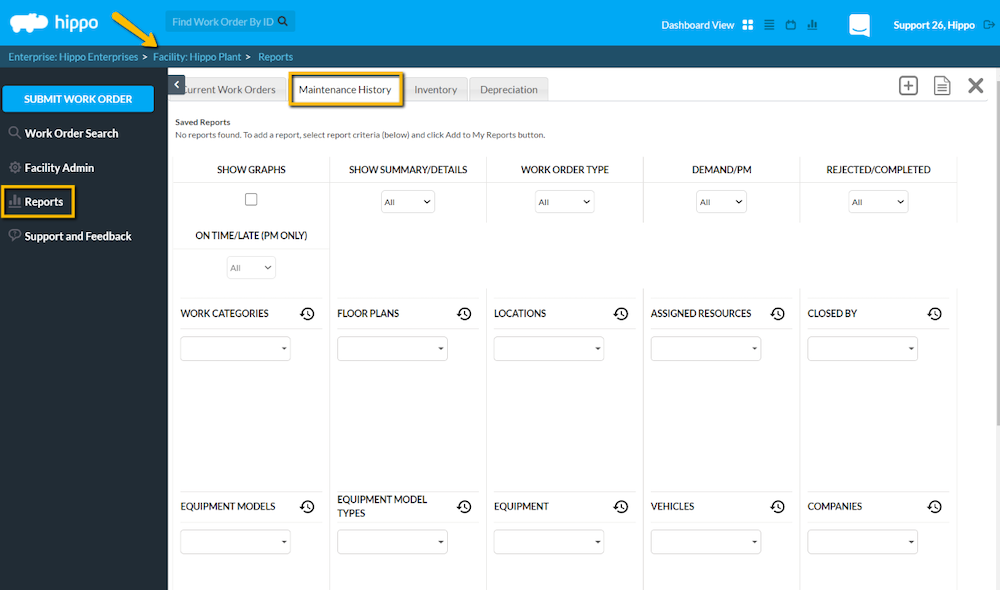
Instructions
- To run a report, click on “Reports” on the Admin panel on the left at Enterprise Level or Facility Level. If the User runs the report at the facility level, he/she can additionally filter through floor plans, locations and vehicles whereas the report at Enterprise Level will provide information per facility.
- Click on the “Maintenance History” tab.
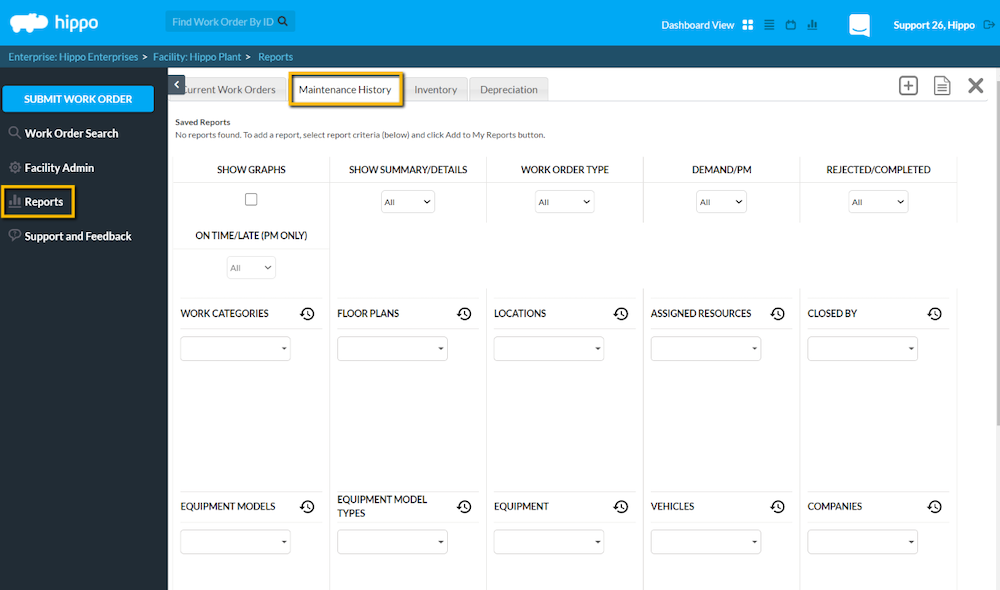
- Apply the filters on the report as required.
- If a User would like to see summary and status graphs on the report, check off “Show Graphs”.
- Select Summary or Details from the drop-down or choose “All” to see both summary as well as details in the report.
- Click in the drop-down menu of Work Order Type to select Equipment, Location or Vehicle or select All to see a report on the work order for all three types.
- Click in the Demand/PM drop-down menu to filter through Demands or PMs or select All to see a report on both PMs and Demand Work Orders.
- Click in the “Rejected/Completed” field to filter through Completed or Rejected Work Orders or select All to see report on both Completed as well as Rejected work orders.
- Click in the “On-Time/Late” field to filter through On-Time or Late Work Orders or select All to see a report on both late and on-time work orders.
- A user can also limit what is seen on work orders by selecting particular Work Categories, Floor Plans, Locations, Assigned Resources, Equipment Models, Equipment Model Types, Equipment, Vehicles, Companies, Part Types and Parts.
- If a user does not select anything in the filter boxes, the report will automatically select everything.
- Make use of the Due Date Range and Completed Date Range field to filter a report through a certain time period.
- Once a User has applied all the filters, click on “Generate Report” icon located in the top right corner of the screen and a report will pop up in the new window.

Note: Please ensure that pop-ups are not blocked for Hippo website. This is a browser setting.
- If “Show Graphs” is checked off, a User will see the graphs at the top of the generated report. The graphs give a summary of the status of work orders as well as costs.
- The next field on the generated report the User with details of the work orders. A User can use the Search bar on the generated report to look for specific data.
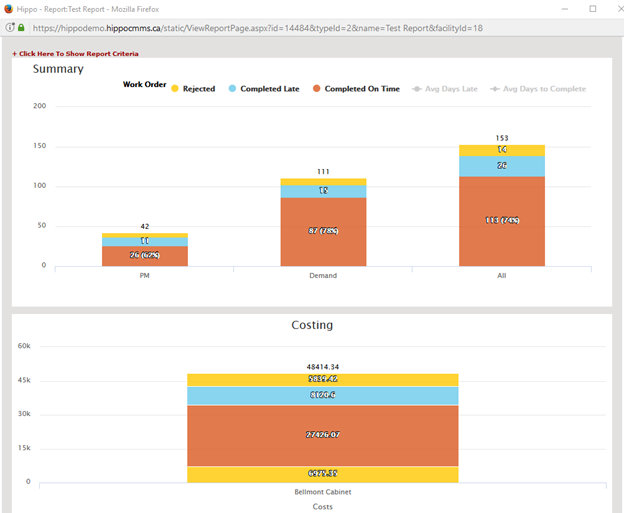
- The generated report will also provide a summary of all work orders in tabulated form.
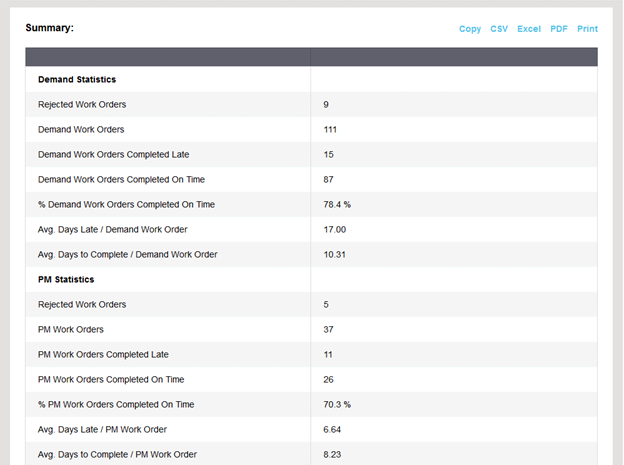
- A User can export the tables from a report into CSV, Excel and PDF format by making use of the buttons located at the bottom of each table.
- A User can also print the report by making use of the “Print” button located at the bottom of each table.
- If there is a report that is run regularly, the User can set it up to be emailed to him/her on regular basis. Apply all the required filters and click on the + icon located in the top right corner.
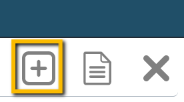
- Give this report a Name and click on “OK”.
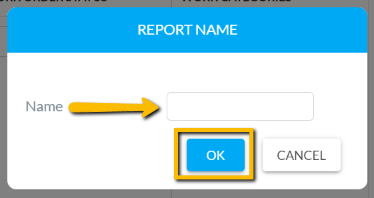
- Once a User clicks “OK”, the report will show up at the top under the list of saved reports. Click on “Schedule” to set up the schedule for the report. The User can set up a Weekly or Monthly Schedule.
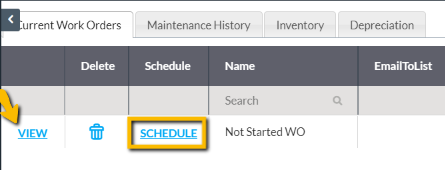
- Add the email addresses of the people that the user may wish to send this report.
